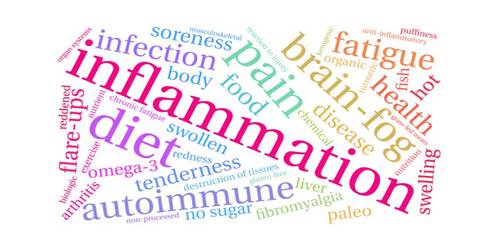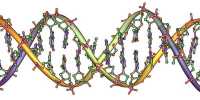Inflammation is a process by which the white blood cells in the body and the components they create protect us from infection by foreign organisms, such as bacteria and viruses. It is a part of a complex biological response to harmful stimulation of body tissues, such as pathogens, damaged cells or irritants, and is a protective response involving immune cells, vascular and molecular mediators. Discomfort is usually temporary and disappears when the inflammatory response works. However, in some diseases, such as rats, the immune system of the body produces inflammatory reactions when no foreign invader is exposed to the fight. In these diseases, called autoimmune diseases, the body’s generally protective immune system damages its own tissues. The efficacy of inflammation is to eliminate the primary cause of cell injury, to clear the necrotic cells and tissues that have been damaged by the original insult and inflammatory process, and to begin tissue repair.
Factors that can stimulate inflammation include germs, physiological agents, chemicals, inappropriate immunological reactions, and tissue death. The five classical symptoms of inflammation are heat, pain, redness, swelling, and loss of functioning (Latin calories, molars, rubbers, tumors, and fontema lesions). Inflammation is a generic response, and therefore it is considered as innate immunity, compared to adaptive resistance that is specific to each pathogen. Redness is due to the spread of small blood vessels to the wound site. Increased blood flow to these areas results in heatstroke and is experienced only in the peripheral part of the body, such as the skin. Very small amounts of inflammation can destroy progressive tissues by harmful stimuli (e.g., bacteria) and compromise the survival of the organism. In contrast, chronic inflammation is associated with various diseases, such as hay fever, periodontal disease, atherosclerosis, and osteoarthritis. Pain associated with inflammation results in the deformation of adipose tissue and is also induced by some chemical mediators of inflammation, such as bradykinin, serotonin, and prostaglandin. A series of biochemical substances involve the local vascular system, the immune system and the cells involved in the injured tissue and mature the inflammatory response. Chronic inflammation, known as chronic inflammation, progressively transports the types of cells present in the cell, such as inflammatory sites, and is characterized by simultaneous destruction and tissue healing from the inflammatory process.
A simple blood test called the HSCRP test can measure C-reactive protein (CRP), which is a marker for inflammation with arterial inflammation. About 20 years ago, Harvard researchers found that men with elevated CRP levels about 2 milligrams (mg / L) per liter or less than twice the risk of stroke as men with chronic inflammation and twice the risk of a heart attack. Infection describes the interaction between the action of a microbial attack and the body’s inflammatory response two factors are considered together when discussing an infection, and this term is used to denote a microbial invasive cause for the observed inflammatory response. Inflammation, on the other hand, purely describes the immune response of the body, for whatever reason. However, many physicians do not regularly recommend HSCRP testing because, for the most part, they believe that the results will not change your treatment. Protein-rich fluid, called exudates, is now able to release into the tissue. Exudates contain substances called antibacterial, which help to prevent the spread of infectious agents throughout the body.
Inflammation is not a synonym for infection. So there are signs of heartburn, such as middle age or beyond and a family history of high blood pressure, high cholesterol or heart disease, knowing that high CRP levels can lead to more aggressive measures to protect the heart. It is useful to distinguish inflammation and infection because in the diagnosis of pathology and treatment there are common situations where inflammation is not governed by microbial invasion, for example, autoimmune diseases, including atherosclerosis, trauma, ischemia, and susceptibility. Conversely, there are pathologies where microbial invasion does not result in a classic inflammatory response, such as parasitosis or eosinophilia.
















